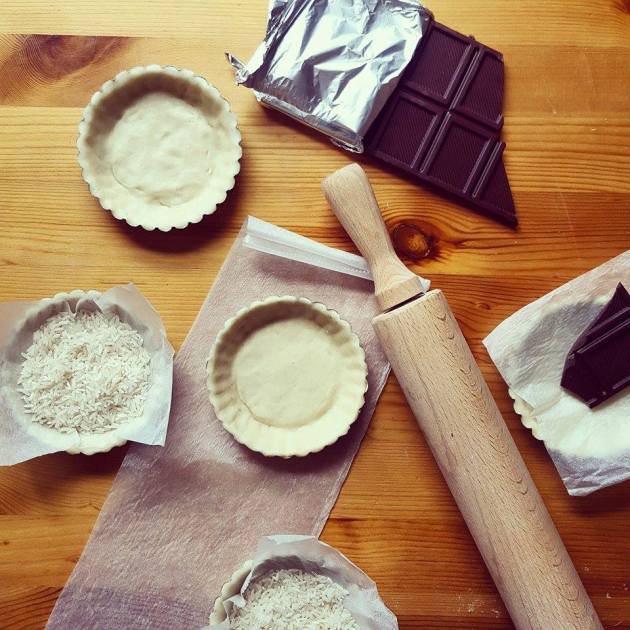Ivorian Proverb: Deux saveurs confondent le palais – Two flavours confuse the palate
Following its independence from France in 1960, Cote D’Ivoire experienced some years of relative political stability and economic prosperity under Felix Houphouët-Boigny. During his rule, as well as being a forerunner in rubber, cashew nuts and palm oil production, the country became the world leader of cocoa export which it remains today. In 1999, some years after Houphouët-Boigny’s death, a military coup took place and in 2002, then again in 2010 the country was in civil war. Now at least 40% of the population of Cote D’Ivoire live below the poverty line.
Action Against Hunger’s main focus in Cote D’Ivoire is treating malnourished children. In 2014 the charity helped 1,937 people.
Donate here to support their work: https://www.justgiving.com/Sophia-Vassie
Cocoa
At least 60% of the export revenue in Cote D’Ivoir comes from the cocoa bean industry. Alongside other West African countries including Ghana it supplies almost two thirds of the world’s cocoa beans for chocolate production. In addition to Ivorian children sent by parents to contribute to the family income, it is estimated that nearly 2 million children from neighbouring countries have been trafficked, or kidnapped, into slavery to labour on cocoa farms. These children work more than 100 hours a week and receive no wage, no schooling, are regularly beaten and are extremely malnourished.
It is so so important to check your chocolate is Fairtrade to ensure that you are not contributing to the continuation of child slavery; please follow this link to find out which chocolate manufactures commit to Fairtrade: http://www.fairtrade.org.uk/en/buying-fairtrade/chocolate
You can also engage in activism by signing this petition calling for an end to child slavery:
Campaign to End Child Slavery in Cocoa Production
Dark Chocolate Tart with Pineapple and Ginger Frozen Yoghurt
It’s UK Chocolate Week this week and as Cote D’Ivoire is the leading producer of cocoa, I’ve decided to do a chocolate recipe instead of a national dish. Actually it’s so far removed from being a national dish that I’ve even contradicted the proverb! Still the main ingredients are all products of Cote D’Ivoire.
Despite producing the most cocoa in the world Ivorians don’t eat chocolate! Instead the cocoa beans are farmed exclusively for export to be made into chocolate and consumed by people in the West. Cote D’Ivoire used to also be a leader in pineapple export but trade decreased following the 2002 Civil War. Pineapples are still enjoyed widely in Cote D’Ivoire and are eat fresh alongside mangoes and melon in fruit salad. Ginger was introduced to West Africa by the Portuguese in the mid 1500s and is used extensively in food and drinks.
I am personally not a huge fan of chocolate – I can cope with dark chocolate on special occasions but I didn’t really know much about the production or origins. Recently at work I took a group of people to attend a fantastic chocolate tasting workshop at the Chocolate Museum in Brixton. Until then, I hadn’t been aware that Cote D’Ivoire was the primary source of cocoa, or of the extent of child labour that goes in to making something that we all know and consume. Although I rarely buy chocolate I have been inspired by what I’ve learnt to rigorously check for Fairtrade approved products.
Ingredients
Dark Chocolate Tart
- Shortcrust pastry
- Double cream
- 70% Fairtrade chocolate
- Rice
Pineapple and Ginger Frozen Yoghurt
- Pineapple
- Ginger
- Lime juice
- Sugar
- Greek Yoghurt
- Teeny bit of double cream
Method
Dark Chocolate Tart
- Roll out the shortcrust pastry and fit into greased tart cases.
- Place baking paper on top of the pastry and put uncooked rice on top to blind bake.
- Bake in a hot oven checking after 10-15 minutes till the edges are golden. Remove from oven and dispose of the rice and paper then put back in the oven to bake the middle. When golden throughout take out and set aside to cool.
- Fill a saucepan with boiling water and put a glass mixing bowl on top. Make sure the bottom of the bowl does not touch the water.
- Break chocolate into the bowl, when it begins to melt add double cream and stir until it’s all mixed through and shiny and smooth.
- Immediately spoon the chocolate into the cooled tart cases and leave the chocolate to set for at least three hours.
- To serve garnish with grated chocolate, lime zest or shredded ginger.
Pineapple and Ginger Frozen Yoghurt
- Prepare a fresh pineapple by cutting off the top and bottom, cutting in quarters then removing the core and skin.
- Chop the fruit into rough squares and add to a saucepan with plenty of sugar, lime juice and splash of water. Cook until the pineapple becomes syrupy and delicious. Take off the heat and blitz in a blender with a generous knob of fresh ginger.
- Transfer to a bowl and put in the fridge to chill.
- Once chilled, in a separate bowl fold together a pot of Greek yoghurt with a couple of tablespoons of double cream and then add the blended pineapple.
- When thoroughly mixed transfer to a container and put in the freezer. After every half an hour, for an hour, take it out and mix the frozen bits with the unset mixture, then leave to set for an hour – If you have an ice cream maker use it, it’s much easier!
- Once set cover and leave in the freezer – take it out at least 20 minutes before eating for a creamy scoop.
Remember to donate to Action Against Hunger by following this link: https://www.justgiving.com/Sophia-Vassie
Enjoy!



